FREQUENTLY ASKED QUESTIONS
Nasopharyngeal cancer is a type of head and neck cancer. However, it is considered distinct from other types of head and neck cancer, with unique risk factors and subtypes.
See more about the 3 types of nasopharyngeal cancer
See more about the 3 types of nasopharyngeal cancer
Nasopharyngeal cancer is considered a rare cancer in the United States. It occurs more frequently in other parts of the world, specifically Southeast Asia. Being of Southeast Asian descent is a risk factor for nasopharyngeal cancer.
See more risk factors
See more risk factors
The exact cause of nasopharyngeal cancer is unknown. However, there are risk factors that have been associated with the development of nasopharyngeal cancer.
Take a look at the ones that have been identified
Take a look at the ones that have been identified
Nasopharyngeal cancer starts in the nasopharynx, located in the upper part of the throat.
See a diagram showing where the nasopharynx is located
See a diagram showing where the nasopharynx is located
Nasopharyngeal cancer can have many symptoms, including a lump or mass in the neck and hearing loss.
Read more about the possible signs of nasopharyngeal
cancer
Read more about the possible signs of nasopharyngeal
cancer
The Epstein-Barr virus has been associated with certain types of nasopharyngeal cancer.
See which types and explore other risk factors
See which types and explore other risk factors
There is a possible association between HPV infection as a viral risk factor for type 1 nasopharyngeal cancer.
Take a look at other risk
factors
Take a look at other risk
factors
Healthcare providers have different diagnostic tools to use in order to figure out if someone has nasopharyngeal cancer, including taking a medical history and a variety of tests and exams.
See the details about how a diagnosis is reached
See the details about how a diagnosis is reached
Nasopharyngeal cancer can be treated in a variety of ways, and sometimes with a combination of treatments.
Read about the different treatment options
Read about the different treatment options
Nasopharyngeal cancer can come back after being treated.
See the 2 main ways it can come back
See the 2 main ways it can come back
GLOSSARY
Epstein-Barr virus (EBV)
A common virus remaining inactive in most people. EBV is associated with certain cancers such as NPC, specifically types 2 and 3.
Head and neck cancer
Cancer that presents in the head or neck region (areas such as the nasal cavity, sinuses, throat, voice box, mouth, or salivary glands).
Human papillomavirus (HPV)
The most common sexually transmitted infection. HPV is associated with type 1 NPC.
